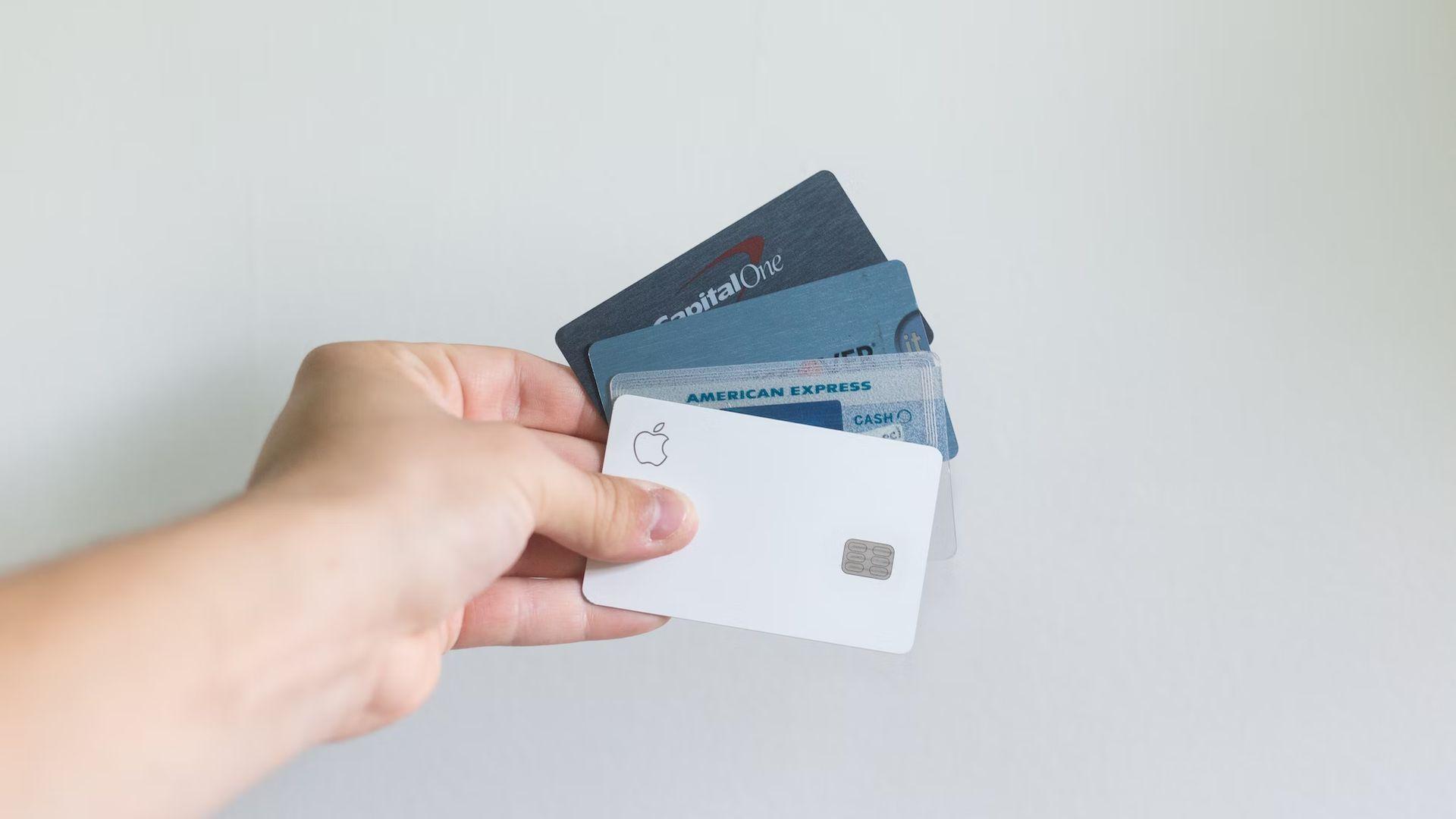Identity theft is a serious cybersecurity risk you must watch out for. When someone steals another person’s personal information and uses it for their profit, especially without the person’s consent, this is referred to as identity theft. Numerous varieties of identity theft exist, each with a unique impact on the victim. No matter how you define identity theft, it always puts the target’s reputation, financial stability, or future in danger.
Cybersecurity precautions are vital against identity theft
It is practically difficult to completely avoid becoming a target because there are so many ways identity theft can occur. A thief can benefit from your identity even if you don’t have a lot of cash assets, a high credit score, or access to worthwhile targets like people or secured systems.
In many instances, the consequences of having your identity stolen may not have a significant financial impact. However, selling your identity to a thief can bring in anywhere from a few to several hundred dollars. Because each identity has an intrinsic value on the black market, identity thieves often target anyone. In other cases, the thief wants to use your identity for their benefit. Thus, they might be more selective in the people they choose to target.
In either event, you may decrease your chances of becoming a victim of identity theft by becoming knowledgeable on how it occurs, the various types of identity theft, the warning signs you have been singled out of, and the best ways to defend yourself from these kinds of attacks.
What exactly is identity theft?
There are several ways for identity thieves to get your personal information, whether they overhear you reading out your credit card number on the phone, purchase it on the dark web after it has been exposed in a data breach, or use a unique method. The process of identity theft then moves on to using that data.
Financial identity theft
Most individuals link this kind of criminal activity, which entails using private data to access financial accounts, with identity theft.
If a credit card or bank statement shows any unusual behavior, place a 90-day fraud warning on your credit reports by calling each of the three credit reporting agencies separately and contacting each financial institution where you have accounts.
Enterprises, caution your “data in motion”
This stops identity thieves from opening new accounts in your name because most lenders check your credit record before authorizing an account, which makes identity theft more difficult.

Criminal identity theft
Criminal identity theft is when someone who has been charged or detained for a crime impersonates another person using that person’s name and other personal information. The victim, who might not be made aware of the crime until it is too late, now has a criminal record against her name. The perpetrator of criminal identity theft may use real or fake photo identification and information such as a name, driver’s license number, or Social Security number.
How does identity theft happen?
The phrase “identity theft” refers to various techniques for stealing other people’s personal information. To buy anything, open an account, or engage in fraud involving persona fraud, a thief frequently targets high-value information, such as a Social Security number, and uses it, especially online.
Cybersecurity 101: Types of identity theft
Here are some scenarios of what identity thieves could do with your private information.
Data breaches
A data breach occurs when a thief or hacker can access an organization’s data without the required authorization. A lot of businesses store their private data in a centralized location. The thief focuses on the database or file containing that information and attempts to get past any installed cyber protections. The identity of the owners’ full names and credit card or Social Security numbers are frequently sought by thieves.
A highly sought-after target may also be a file holding more information, especially if that information can be used to link each person’s identification. An individual’s address, previous addresses, phone numbers, maiden name, or previous addresses are a few examples of personal information that could be compromised.
In the United States, there were 1,506 data breaches in 2019, according to Statista, exposing 164.68 million sensitive information. It is challenging to prevent your data from being exposed to one of the numerous data breaches that take place every year since most people’s personal information is kept in the databases and files of numerous businesses they do business with.
However, there are some cybersecurity measures you can use to safeguard yourself from identity theft.
Browser activity
Most of the time, the websites you visit are secure. They are safeguarded by security measures that stop hackers from accessing the data you enter. Encrypting the data that is entered is frequently used for protection. By doing this, if data were to be intercepted, a thief would only be able to decipher a random collection of letters, numbers, and symbols rather than your Social Security number, name, address, etc.
Your guide to assessing cybersecurity risks before they harm valuable assets
However, you can be putting yourself at risk if you choose less well-known websites. Even if the website’s creator had the best of intentions, a hacker might have been able to compromise the website. In other instances, a hacker may create a fake website that mimics an authentic one. When you enter your information, the hacker receives it directly rather than the organization you intended.
Your browser can frequently identify fake websites and warn you of the risk. You should take action by exiting the website and shutting your browser if you receive an alert.

Deepweb
The network of websites that make up the dark web is concealed from common internet users. When people access the dark web, they can utilize software to conceal who they are and what they are doing online. Because of this, the dark web is the perfect venue for thieves, hackers, and other fraudsters to scam users.
As a result, your personal information is highly sought after on the dark web. Hackers frequently go to the dark web to sell personal information to someone else because they are aware of the increased danger involved in trying to exploit sensitive information themselves. The initial purchaser might use it or transfer ownership to another malicious party to make a quick buck. Therefore, it is practically difficult to predict how your information will be utilized if it ends up on the dark web.
Malicious software
A hacker can carry out various tasks using malware, or malicious software, including managing a network, gaining backdoor access, and more. Additionally, malware might be deployed deliberately to steal personal data.
Malware designed to spy on the computer activities of the target is the most frequent method used to carry out identity theft or fraud. A phishing email or other type of trap used to trick the user into clicking on a link or picture that installs malware automatically could be the first stage of the attack.
A hacker can carry out a variety of tasks using malware, or malicious software, including managing a network, gaining backdoor access, and more. Additionally, malware might be deployed deliberately to steal personal data.
Malware designed to spy on the computer activities of the target is the most frequent method used to carry out identity theft or fraud. A phishing email or other type of trap used to trick the user into clicking on a link or picture that installs malware automatically could be the first stage of the attack.
Credit card information
One of the easiest methods for a thief to steal your identity is through credit card theft. Once hackers acquire your credit card, they frequently do not need to know anything else about your identification in order to make transactions in your name. Even substantial purchases that the user is unlikely to be able to repay may be made by a thief. They may profit by selling the item to someone else at a significant discount.
Card numbers can be obtained through credit card theft and sold on the dark web. It’s possible to sell a credit card number for a few dollars or much more. The thief steals your credit card details, who then sells them to another party. While it’s crucial to cancel any lost or stolen credit cards right away, it frequently happens that your card details are obtained through a data breach.
Businesses keep extensive lists of credit card information to enable customers to complete purchases more quickly. The company obtains and stores credit card data when customers make their first purchase. The next purchase is quicker and simpler for the customer when they come back because the business already has their credit card information on file. However, this ease comes at a price: if someone can get past the security measures guarding customers’ card information, they can access a database of account numbers.
Mail theft
Identity thieves were active in stealing people’s personal information and using it for their gain even before the internet. Mail theft was a typical technique. The hackers of this steal the victim’s credit card or other personal data from their mailbox. They then try to spend or sell it to another thief for a quick profit.
Your mailbox does not have to be broken into for a burglar to steal your credit card or obtain personal data. It is as simple as searching through your trash. Sensitive information-containing letters, alerts, or account statements are frequently discarded. Even if the information in the trashed paper is insufficient to carry out full identity theft, it can still be utilized by the thief to verify your identity. It is always better to shred your old mail rather than toss it in the trash.

Phishing attacks
An attacker may send a text message or email that appears to be from a reliable source. The target is directed to a fake website after clicking a link, where they are prompted for their account, password, or other sensitive details like their Social Security or credit card number. The hacker can then use that information to buy things or assume your identity.
Wi-Fi hacking
You could be exposed to a hacker who can eavesdrop on your conversations with the network whenever you use your computer or mobile device on a public network. This problem is especially common in public spaces like coffee shops, department stores, and airports, where anyone can connect to the network frequently without a password.
After beginning to spy on your communications, the hacker keeps an eye out to see whether you enter any personal information. Your Social Security, credit card, or bank account information may be the target of their targeted attack. Once they get it, they can use it to register accounts online in your name, make purchases, or sell the data to someone on the dark web.
Mobile phones
Some people use their mobile devices to automatically check in to websites without entering their login or password. These websites might be accessible if someone gets their hands on your mobile device, especially if they don’t require a password or biometric authentication like a fingerprint or facial recognition.
EvilProxy service allows hackers to utilize advanced phishing tactics
People frequently save their personal information, like passwords and account numbers, in applications on their phones, which makes mobile phone theft a common problem. This might contain email and text apps as well as note-taking software. A thief can access your emails and text messages to collect information if they manage to take your phone and get inside it.
Additionally, they can utilize your phone to complete the second step of a two-factor authentication (2FA) access procedure if they wish to carry out a more sophisticated attack. When a site or application texts you a verification code, the thief can enter it to access the site or application after receiving the SMS.
Card skimming
Skimming may also be a component of credit card theft. A phony credit card reader is installed on a gas pump or another point-of-sale (POS) equipment during a skimming assault. Customers’ card information is then gathered as they swipe their cards. Particularly when a debit card is being used, a covert camera is frequently used in a skimming attempt to capture the target’s password.
Although systems such as System for Cross-Domain Identity Management (SCIM) that establish a standardized framework between IT systems and identity providers are widely used and protect your security, it’s critical to keep an eye out for any unusual credit card reader. The card-swiping device, for instance, can stick out excessively from the machine or shake loosely. Stop using the device, look around for hidden cameras directed at it, and notify the appropriate authorities if anything seems suspicious. They can find the offender and safeguard your information as well as the information of others if you let them know the specific location and the reasons why you thought a skimming device was present.
Child ID
In the case of kid ID theft, the attack is carried out using the child’s data. This could also include the child’s Social Security number, which will likely be mailed to you shortly after birth. The attacker might put off using the data for years, waiting until the child is old enough to apply for a credit card. The thief then uses the information to start an account or apply for credit in the child’s name once they reach the appropriate age.

Tax ID
With tax ID theft, the attacker files your taxes and then claims your return using your social security number and other relevant data. They might also make changes to the tax data they input to increase the return they receive. It’s possible that if this occurs to you, you won’t realize it until you try to file your taxes. You will then receive notification from the Internal Revenue Service (IRS) that a tax return has already been submitted under your name. You ought to be able to file your taxes and obtain your deserved refund following an investigation.
How to prevent identity theft?
Don’t share everything online. Your home or email address, children’s names, birth date, and other information you provide on social networks can be swiftly gathered by thieves for use in phishing attacks, frauds, and account theft.
Don’t share personal data on phone calls. Unless you have initiated contact, never give out personal information over the phone, over the mail, or online.
Examine your credit report and report any issues right away. Ideally, you should check your credit report once a year. Consider registering for continuing credit file monitoring to look out for possible fraudulent behavior. Take measures to prevent identity theft by spotting it early.
Create unique and strong passwords. By choosing an easy password, you open the door for identity thieves to access your personal data. Passwords can be made more complex by incorporating letters, numbers, and special characters and changing them frequently.
Don’t rely on public Wi-Fi hotspots: Be mindful that hackers and viruses can infect your mobile device. Only download software from legitimate sites at home over a safe network.
Check your transactions. Look over your credit card statements carefully for any unauthorized withdrawals or expenditures, and report them immediately. If your bills are late, call your bank. It could indicate that someone updated their contact details to conceal fraudulent charges.
Shred important documents. You are throwing away documents that contain financial information, such as insurance papers, bank checks, statements, and pre-approved credit applications that were submitted in your name. Your recycling or trash can be easily searched through by an identity thief.
In addition, following the Identity Theft Detection and Remediation (ITDR) approach is an important step to ensure your cybersecurity.
Conclusion
To sum up, anyone can become a victim of identity theft. It’s critical to follow the recommended cybersecurity precautions. Seniors and college students should exercise extra caution when it comes to identity theft because these groups make easy targets for thieves. While those who use shared computers are likewise at risk, everyone in today’s society has the potential to be vulnerable. However, people become more irresponsible when they handle personal information carelessly and ignore warning indications. Long-term effects from identity theft may not only hurt victims individually but can negatively impact the economy and businesses.






